South China Sea belongs to China, and the world can forget about lecturing, let alone forcing, the Chinese about respecting international law. The Hague-based Permanent Court of Arbitration verdict last year, of which says that China couldn’t claim historic rights in all the waters within a “nine-dash” line used by Beijing to delineate its claims, was simply rubbished by the Chinese.
It’s been a year since the verdict, yet not even the mighty U.S. dares enforcing the ruling. In fact, Beijing laughed at the arbitration ruling before expediting on the militarization of disputed islands in South China Sea. As far as China is concerned, any dispute brought to international court against Beijing would be seen as a challenge to its sovereignty, period.
If you think China could justify that South China Sea belongs to them because the name of the waters itself is already self-explanatory, then likewise, Indian Ocean must belong to India. Not quite correct. What the Chinese think belongs to them, it belongs to them. But what others think belong to them, the Chinese think it should be shared among global communities.
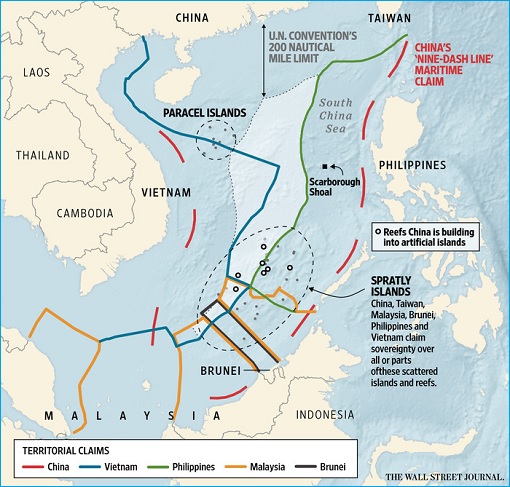
Hey, welcome to the world of communism (*grin*). China appears to be on a mission to reclaim what it had lost hundreds of years ago. The naval history of China dates back thousands of years. Leading maritime power especially in the years 1405-1433, the Chinese could easily conquer the world, if they wished to, but they didn’t. Their (stupid) goal was just sailing around showing off their power.
Zheng He once travelled all the way from China to Southeast Asia and then on to India, all the way to major trading sites on India’s southwest coast, and even to the Persian Gulf and east coast of Africa. But what was even more impressive about those voyages was that they were done with hundreds of huge ships and tens of thousands of sailors.
In fact, the Chinese Empire dominated the sea for 300 years. Chinese shipbuilding technologies were unbelievably sophisticated. We’re talking about vessels over 400 hundred feet long, 160 feet wide, with several stories, nine masts and twelve sails, and luxurious staterooms complete with balconies. One of the armadas was composed of 317 ships.
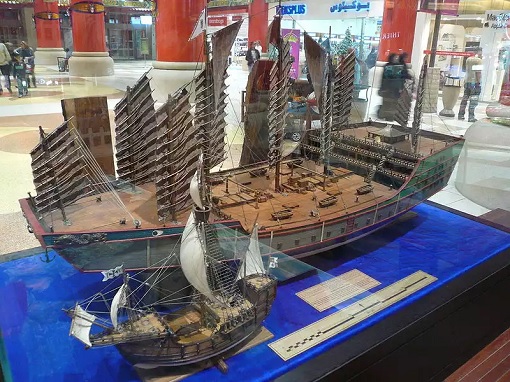
In comparison, the U.S. Navy, supposedly the largest and most capable navy in the world has only 276 deployable combat vessels as of June 2017. Only now President Donald Trump talks about achieving 350 ships. As China steadily and secretly building more new ships to rival the U.S., it’s not hard to understand why India is so upset about the Chinese expansion to the Indian Ocean.
Yes, forget South China Sea. It’s the Indian Ocean that the U.S. and one of its close allies, India, have to worry. The Chinese naval power cannot be underestimated. After all, it was a threat to attack Vietnamese military bases that had spooked the strong Vietnam into surrendering its oil drilling expedition in an area of sea about 400km (250 miles) off Vietnam’s south-east coast.
Last month, the Chinese Navy showed off its first 10,000-ton Type 055 destroyer (NATO codename: Renhai) which is equipped with the latest air, missile, ship and submarine defence systems. Supposedly the world’s second-largest and second most powerful warship after the 15,000-ton USS Zumwalt-class destroyer, the Type 055 has raised Indian Navy’s eyebrows.
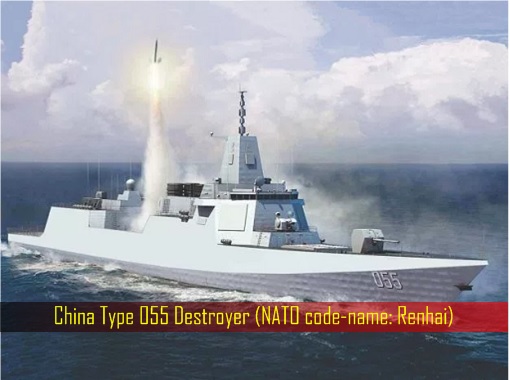
When fully armed, the Chinese destroyer is estimated to weight more than 12,000 tonnes, heavier than India’s latest destroyer which would weight 8,200 tonnes full armed. The biggest problem is, India’s latest Project-15B “Visakhapatnam” class destroyers still have not been commissioned, but the Chinese are already building four of the Type 055.
As China and India engaged in dispute over a contested region high in the Himalayas, triggered by a Chinese road construction project in a disputed area and a Bhutanese request for Indian help, a new confrontation is slowly developing in the Indian Ocean. The recent joint naval drills between the U.S., India and Japan were a direct response to the Chinese expansion in the Indian Ocean.
In retaliation, China had despatched 13 to 14 naval vessels, included Luyang III class destroyers, hydro-graphic research vessels, an intelligence-gathering ship and a submarine, to Indian Ocean during the Malabar exercises. China’s first permanent overseas military deployment for almost 60 years took place 2 weeks ago when troops were sent to Djibouti.
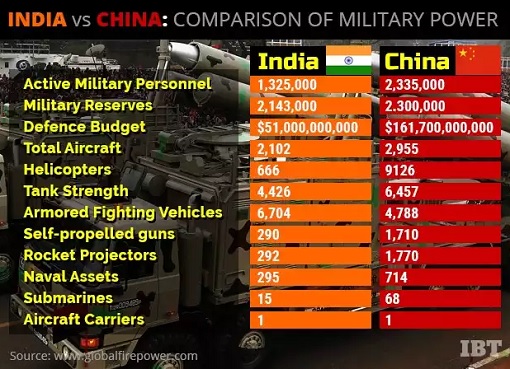
Djibouti marks the first time a long-term garrison of the People’s Liberation Army has been established beyond China’s borders since their withdrawal from North Korea in 1958. China claims that the Horn of Africa nation of Djibouti serves as logistics centre to support anti-piracy, U.N. peacekeeping and humanitarian relief missions in Africa and western Asia.
Of course, the U.S. and India have zero justification to stop China from sailing around the Indian Ocean. The Chinese “Belt and Road” initiative involves developing port facilities in the Indian Ocean with Pakistan and Sri Lanka. Unlike the South China Sea, the Indian Ocean isn’t a site of overlapping sovereign rights.
True, it’s unfair that China considers South China Sea as its own properties while the Indian Ocean as international waterway. Again, that’s the advantage of being a communist country who answers to nobody. Now, the Chinese can reuse the U.S. favourite excuse – freedom of navigation – in the Indian Ocean. Heck, Beijing can even tell all and sundry that everyone has equal rights there.
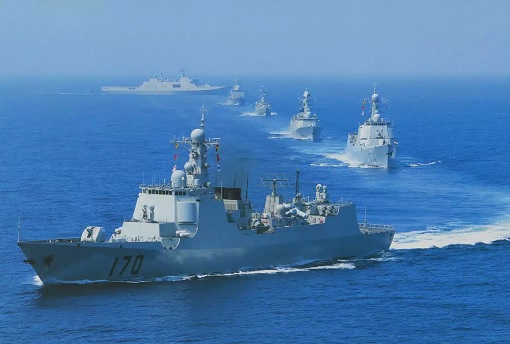
Call China a bully who might one day declare the Indian Ocean its “own sea” too, the same way they did with the South China Sea. Chances are the Chinese won’t care because it could afford to bulldoze its agenda through, the same way America does. As China teams up with Pakistan, India is still taking baby steps playing catch up.
There’s one hidden secret reason why the Chinese are forced to expand beyond the South China Sea to the Indian Ocean. Thanks to Americans’ consistent intimidation in the South China Sea, China realized that a simple blockade of the Strait of Malacca by the U.S. and its alliance will cut China off from Middle East oil supplies and from its “Second Continent” Africa.
China knew it cannot secure its dominance in the South China Sea without expanding its presence in the Indian Ocean. That was how the U.S. did it before becoming global policeman. Now, do you understand why China is shoring up Sri Lanka’s major ports and working feverishly with Pakistan to build an alternative route to Middle East and Africa – the China-Pakistan Economic Corridor (CPEC)?
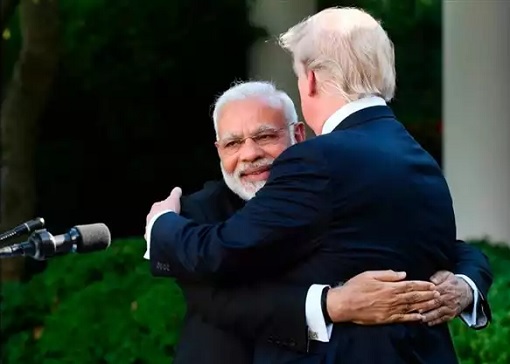
And do you also understand why Indian Prime Minister Narendra Modi gave Trump a big bear hug during his White House visit last month, as if the U.S. president was his own biological brother? Without the powerhouse of the United States Navy, the China Navy would not think twice about bullying the Indian Navy even in its own backyard – the Indian Ocean.
Other Articles That May Interest You …
- Show Of Power – Vietnam Stops Drilling After China Threatened To Attack
- Watch Out US, Japan, India – China Launches Asia’s Biggest Type 055 Destroyer
- India Boycotts $100 Billion OBOR – Sees Through China’s Territorial Ambitions
- Declaration Of War! – U.S. Military Wants Control Over Ports In China & Russia
- China Invasion – Top 10 American Iconic Brands Now Owned By Chinese
- How China Brilliantly Uses North Korea To Get What They Want From Trump
- Relax Mr. Kim, Here’s Why China Will Not Allow U.S. Attacks North Korea
- “War Message” To Japan And US!! – China Sends 40 Fighter Jets & Bombers To Okinawa

|
|
July 25th, 2017 by financetwitter
|


|

|

|

|

|

|




























Indian Ocean does not belong to India or even under claim by India. Its an open ocean unlike the South China Sea which historically claimed by China since the Yuan Dynasty.